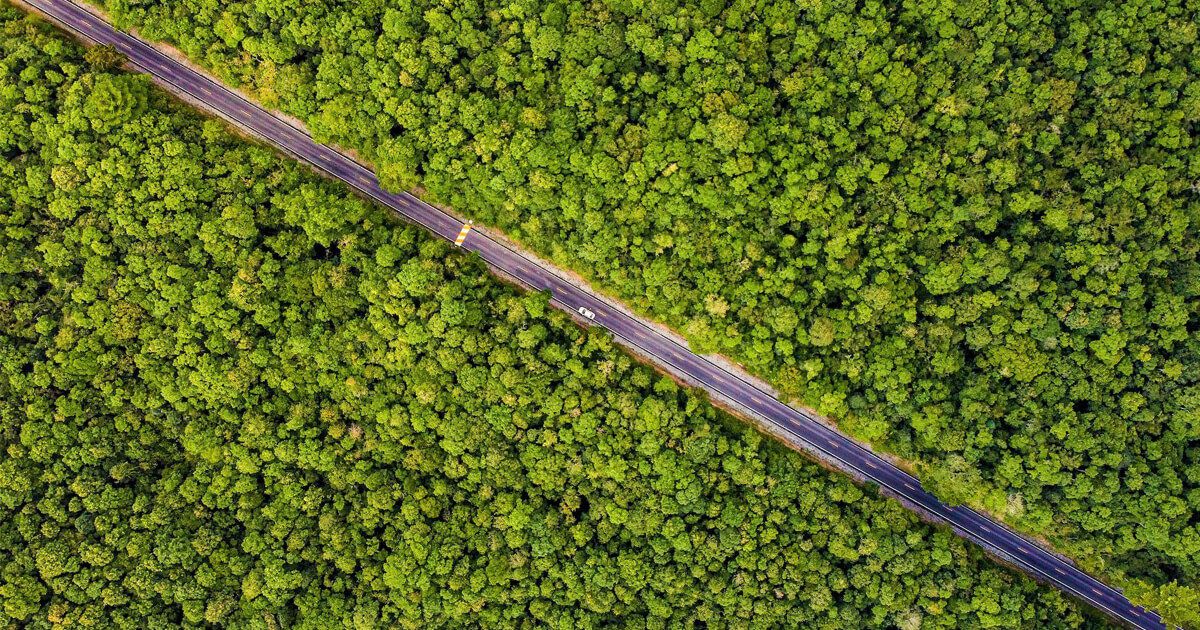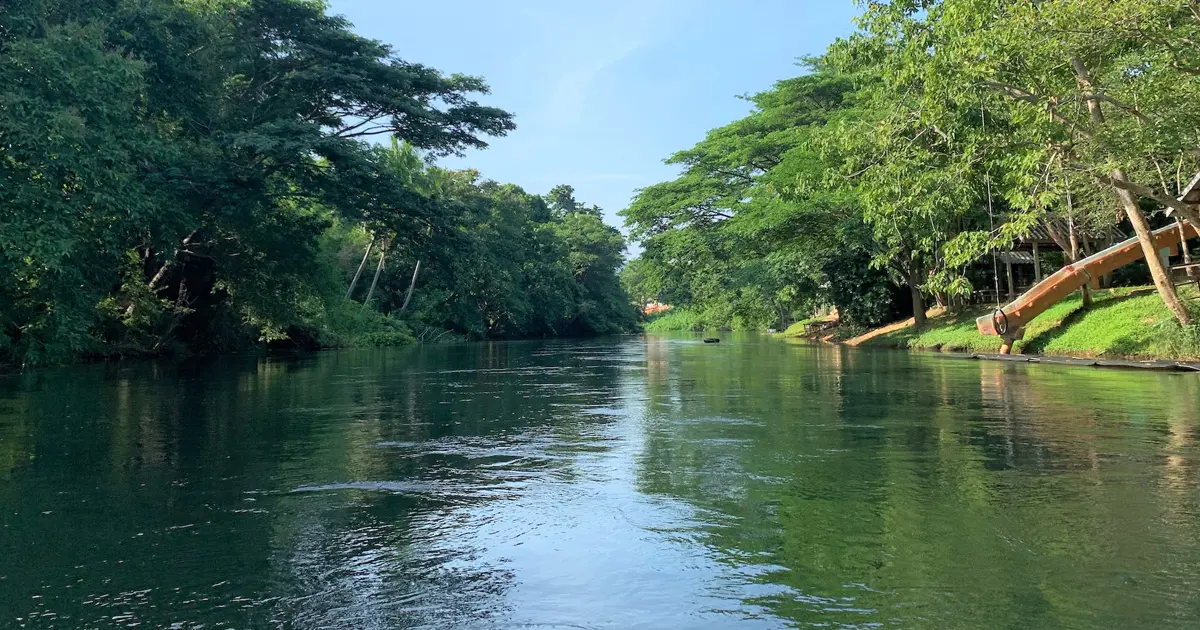Exploring National Parks in Thailand
 The national parks in Thailand contain a diverse array of flora, fauna, and geographical attractions.
The national parks in Thailand contain a diverse array of flora, fauna, and geographical attractions.
Thailand has a diverse array of flora and fauna within its borders. However, there are occasions when that flora and fauna come under threat from either land development, poaching, or some other form of human intervention. So, the government established protected areas wherein human intervention is kept to a minimum so as to best preserve the flora and fauna.
There are currently 147 national parks in Thailand. Many of them are tourist attractions for a variety of reasons. Some are notable for natural features like waterfalls. Some are notable for wildlife. Whatever the case, there are plenty of visitors who traverse their grounds either by themselves or as part of tours.
When it comes to the administration and protection of a national park, Thailand has the National Parks, Wildlife and Plant Conservation Department of the Ministry of Natural Resources and Environment. Previously, national parks were overseen by the Royal Forest Department of the Ministry of Agriculture.
Given that there are nearly a hundred and fifty of them spread throughout the country, it’d be difficult for someone to visit all of them. So, what are the best national parks in the country for visitors with limited time to check out?
Well, for starters, there’s a difference between a terrestrial national park and a maritime national park. The latter has its own division managing it, the Marine National Park Division.
Terrestrial Parks
When most people think of the best national parks in Thailand, they probably think of a terrestrial park – very large tracts of land wherein nature is left largely untouched. Thailand has plenty of those.
1. Khao Yai
The first national park of note in Thailand is Khao Yai. Covering an area of eight-hundred and sixty-two square miles, Khao Yai is Thailand’s third-largest national park. But while it may be third in area size, it’s not the third chronologically as it was established in 1962, making it the first of Thailand’s national parks.
Khao Yai contains over three thousand species of plants, three-hundred and twenty species of birds, and six-hundred and sixty species of mammals. While there were tigers in the forest at one point, their numbers within the forest have been negligible at best for the last twenty years.
Some of the species within the park include the Asian black bear, the Indian Elephant, and wild pigs.
Litter became a serious problem in the park, with twenty-three thousand tonnes of waste left behind in 2016. The problem became so serious that in 2020, the garbage was mailed to the homes of guests instead of being thrown away.
2. Kui Buri
 Spot the spectacular elephants in Kui Buri national park.
Spot the spectacular elephants in Kui Buri national park.
Of all the wildlife in Thailand, the most recognizable, at least when it comes to national symbols, is the elephant. Unfortunately, the Indian elephant is endangered, with approximately twenty-five hundred to thirty-two hundred living in Thailand. These elephants live in fragmented populations, mainly in the mountains that border Myanmar and in the southern peninsular.
The largest concentration of wild elephants in Thailand is Kui Buri national park, with an estimated three-hundred and twenty specimens living inside of it. There’s a tour that goes to parts of the forest and stops at Huai Luek Wildlife Watching Area, which is as far into the park as people are allowed to go. From the watching area, people can see down into a valley beneath where, if the visitors are lucky, they can spot a herd of elephants just going about their business.
At the boundaries of the park is Ruam Thai village, where there are pineapple and rubber plantations. Local farmers have come up with ways to keep elephants away from their crops without harming them.
Kui Buri is also notable for its sandalwood trees, of which there are over two-hundred thousand of them. But the number isn’t why those trees are notable. No, they’re notable because those sandalwood trees are the only ones that can be used for the cremation of royal family members and even then, they have to meet certain requirements; that they’re already dead and over a century old.
Upon the death of King Bhumibol Adulyadej, nine of those trees were cut down for his cremation. This was after a royal brahmin spent a month selecting those trees.
3. Doi Inthanon
 View Thailand from above at Don Inthanon.
View Thailand from above at Don Inthanon.
Not all parks are notable for plants and animals. For example, there’s Doi Inthanon National Park. While the forests do have a good mix of plants and animals, the crown jewel of the park is the eponymous mountain.
Don Inthanon is the highest point in Thailand, and it’s even nicknamed ‘the roof of Thailand’ because of how tall it is. The total elevation of the mountain is eight-thousand four-hundred and fifteen feet and the ultra prominent peak of the mountain is alternatively known as Doi Luang (big mountain) or Doi Ang Ga (crow’s pond top).
4. Kaeng Krachan
 Tourists head to Kaeng Krachan to experience nature and see diverse wildlife.
Tourists head to Kaeng Krachan to experience nature and see diverse wildlife.
Sharing a border with Burma, Kaeng Krachan National Park is the largest of the national parks in Thailand. The park has a total area of 1,125 square miles. The sheer size of the park also means that nowhere else in the country can match its biodiversity. This makes it possibly the best national park in Thailand for wildlife.
Among the animals that live in the park are leopards, bears, deer, elephants, and jackals. Because of this, the park is popular among tourists for wildlife watching. There was a significant tiger population in the park, but that has since greatly declined. It’s also speculated there are tapis in the park based on camera traps and footprints.
However, the park’s elephant population is under constant threat, with authorities battling poachers. In Thailand, wildlife such as elephants are protected, but that protection can only go so far.
5. Khao Sok
 The parks along Thailand’s coastal areas are wondrous in their own right.
The parks along Thailand’s coastal areas are wondrous in their own right.
In most national parks, there are accommodations nearby so as not to build settlements on protected land and keep human impact within the park proper to a bare minimum. In Khao Sok, there’s the Rainforest Camp, which is twenty tents floating on a platform above Cheow Lan Lake.
There’s no sound at night except for cicadas and it’ll stay that way until dawn when the gibbons start screeching.
Another draw of the park is Rainforest Camp’s sister property, Elephant Hills Tented Camp. Set against limestone cliffs, the camp has 30 tents. Within the park, guests can help feed and bathe elephants that are being rehabilitated after having worked in the logging industry.
Khao Sok also contains a large area of virgin rainforest, a remnant of a rainforest that was older and more diverse than the Amazon.
The world’s only amphibious centipede, Scolopendra cataracta, was discovered in 2000 by an entomologist from London who was on his honeymoon.
6. Erawan
 Thailand’s beaches get all the attention, but its bodies of freshwater are amazing as well.
Thailand’s beaches get all the attention, but its bodies of freshwater are amazing as well.
In Hindu mythology, Erawan is a white elephant with three heads. While Buddhism is the dominant religion in Thailand, there are Hindu influences. Case in point; Erawan national park in Thailand.
The park’s main attraction is Erawan Falls. The seven tiers of the falls are said to resemble its namesake deity.
Marine National Parks
Thailand also has a number of maritime national parks. These are beaches and islands that are meant to be preserved not just of their wildlife and biodiversity, but also so as to preserve the beauty of the country.
 Khao Sam Roi Yot has caves that house wonders both ancient and more recent.
Khao Sam Roi Yot has caves that house wonders both ancient and more recent.
1. Khao Sam Roi Yot
Khao Sam Roi Yot National Park is the first of Thailand’s coastal national parks. It covers 8.1 square miles and became a national park in 1966. It also contains the largest freshwater marsh in Thailand.
Within the park is Phraya Nakhom Cave, a large cave that’s accessible by boat or by walking across Tian mountain. After that’s done, there’s a 1410 foot climb up the mountain. Inside the cave, there’s a hole in the city. The top of the hole has a stone bridge known as ‘death bridge’ because of how many wild animals have fallen to their deaths trying to cross it.
But the main attraction within the cave is the Khuha Kharuehat Pavilion, which was built in 1890. There are a few times during certain months wherein the sun will shine directly upon it.
In 2020, archaeologists announced the discovery of cave paintings dated to be around 3000 years old. The paintings depicted humanoid figures hunting an animal believed to be a serow, a goat-like animal.
It’s also believed that Khao Sao Roi Yot was where King Mongkut hosted European guests in 1868 to view a solar eclipse. King Mongkut reportedly calculated the date and location of the eclipse himself and his calculations were proven to be more accurate than contemporaneous French astronomers.
2. Ao Phang Nga
 Ao Phang Nga has been featured in a few blockbuster movies, see why for yourself.
Ao Phang Nga has been featured in a few blockbuster movies, see why for yourself.
Ao Phang Nga National Park is in southern Thailand. The coastal areas of the park include parts of the Mueang Phang Nga District and the Takua Thung District. The park features a number of tower karst islands and sheer cliffs. The park also has the largest mangrove forest that remains in Thailand.
Ao Phang Nga is particularly notable for Khao Phing Phan, an island off whose coast stands Ko Ta Pu, a limestone karst tower that’s been described as resembling a mushroom.
The island, colloquially known as ‘James Bond Island,’ has been featured in two movies in the James Bond film series. The first was The Man with the Golden Gun in 1974 and the second was Tomorrow Never Dies in 1997. In the latter, the island was identified as being in Vietnam.
Every country has its own attractions and resources. Thailand just happens to have incredibly biodiverse attractions outside of the urban ones in its cities such as Bangkok. While most visitors will probably end up in the cities like Bangkok or on the beaches, the national parks in Thailand are nothing to be sneezed at.

